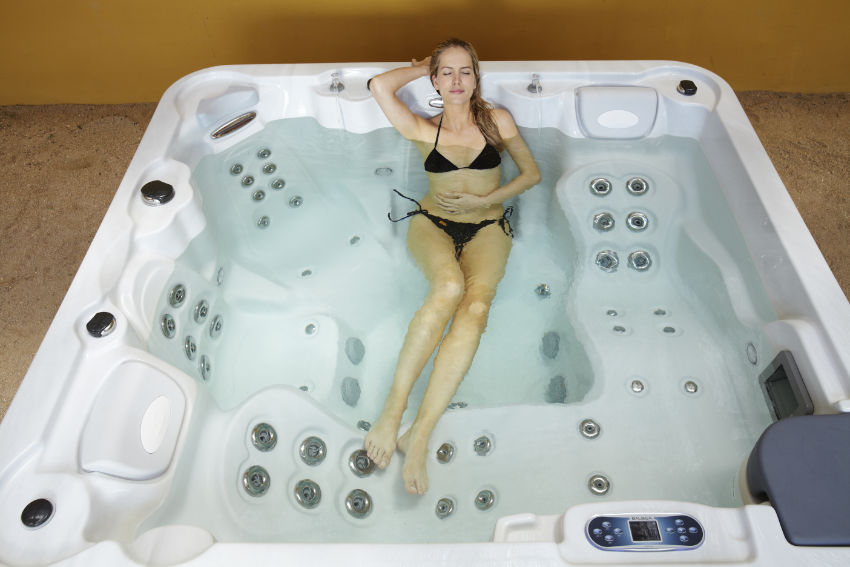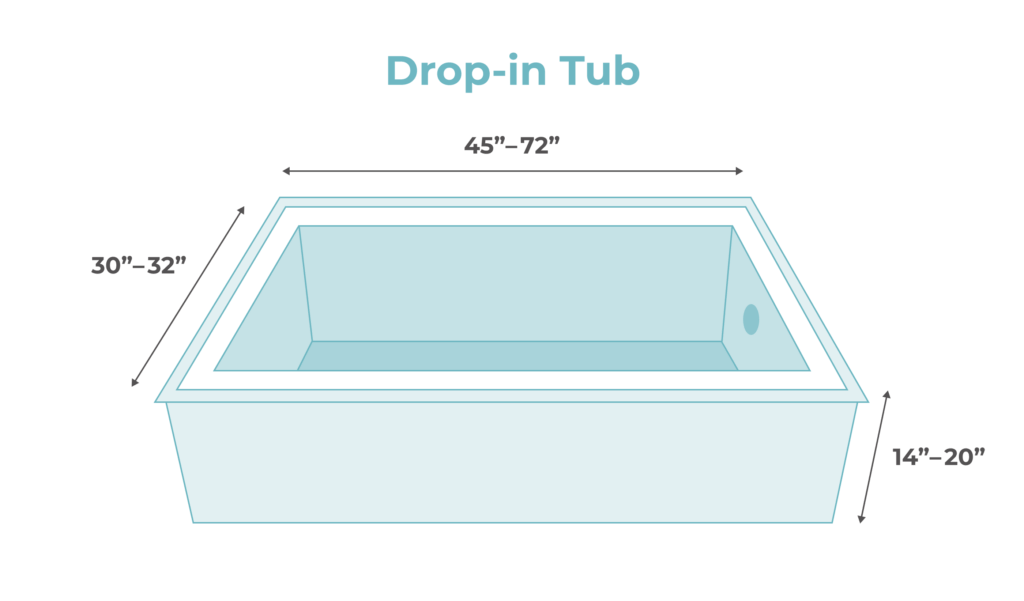Introduction
When it comes to remodeling a bathroom or choosing fixtures for a new home, one of the key elements we often consider is the bathtub. It’s not just a place to bathe; it’s a sanctuary for relaxation after a long day. Understanding the ‘standard tub dimensions’ is crucial to ensure that your new tub fits perfectly in your bathroom space and meets your bathing needs.
In this article, we’ll explore the various dimensions and types of standard tubs, and provide you with the necessary insights to make an informed decision.
Standard Tub Dimensions

Length
The length of a standard tub is typically one of the first dimensions we look at. Most standard tubs have a length that ranges from 60 inches (5 feet) to 72 inches (6 feet).
This size is designed to comfortably accommodate the average adult, allowing enough space to stretch out without feeling cramped.
Width
Width is another dimension that contributes to the comfort and functionality of a tub. Standard tub widths vary from 30 inches (2.5 feet) to 42 inches (3.5 feet).
The width you choose will depend on the size of your bathroom and your personal preference for bathing space.
Depth
Depth is essential for determining how much water your tub can hold and how immersed you can be. A standard tub typically has a depth of 14 to 20 inches.
If you’re looking for a deeper soak, you might want to consider a tub with a depth at the higher end of this range.
Capacity
The capacity of a standard tub is measured in gallons and indicates how much water the tub can hold when filled to the overflow drain.
On average, a standard tub can hold between 25 to 45 gallons of water. This is an important consideration for those who are mindful of water usage or have specific therapeutic needs.
Types of Standard Tubs

Alcove Tubs
Alcove tubs are the most common type of bathtub, designed to fit into a three-walled enclosure. These tubs are typically 60 inches long, 30-32 inches wide, and 14-16 inches deep. They are a great space-saving option and are often combined with a shower.
Drop-in Tubs
Drop-in tubs are designed to be dropped into a framed enclosure that’s been built to match the tub’s dimensions. These tubs can vary in size but generally follow the standard dimensions mentioned earlier. They offer a sleek, finished look and can be a focal point in the bathroom design.
Freestanding Tubs
Freestanding tubs stand alone and are not attached to any walls. They can be placed anywhere in the bathroom and come in various lengths, widths, and depths. These tubs often serve as a luxurious centerpiece and can range from the vintage clawfoot style to modern sculptural pieces.
Corner Tubs
Corner tubs are designed to fit into a corner of the bathroom, making them a space-efficient option. They are usually five-sided and have a unique size range, often larger than standard tubs, providing a more spacious bathing experience.
Considerations for Choosing a Tub
Bathroom Size
Before choosing a tub, it’s essential to consider the size of your bathroom. A standard tub might not be the best fit for a small bathroom, and in such cases, you might need to look at smaller or differently shaped options.
Here’s a summary table of standard tub dimensions based on the number of people they typically accommodate:
| Capacity (Number of People) | Dimensions (Approximate) |
|---|---|
| 2-3 People | 5 feet by 6 feet or similar |
| 4-5 People | 6.5 to 7 feet square or rectangular |
| 6-7 People | 7 to 8 feet in length and width |
| 8-10 People | 8 to 9 feet or more in length and width |
| 12+ People (Party Tubs or Swim Spas) | Exceeding 9 feet in both length and width |
These dimensions are general guidelines, and actual sizes may vary depending on the specific make and model of the tub.
Installation Options
The type of installation you choose will depend on your bathroom’s layout and your design preferences. Alcove, drop-in, freestanding, and corner tubs each have different installation requirements that should be considered during the planning stage.
User Preferences
Finally, think about who will be using the tub and their specific needs. For instance, a deeper tub might be more suitable for someone looking to use the tub for therapeutic reasons, while a shallower one might be better for families with small children.
Conclusion

Choosing the right bathtub for your space involves understanding standard tub dimensions and how they fit into your overall bathroom design and personal preferences.
Whether you opt for an alcove, drop-in, freestanding, or corner tub, make sure to consider the length, width, depth, and capacity that will best suit your needs. With the information provided in this article, we hope you feel confident in finding the perfect tub to turn your bathroom into a relaxing retreat.
FAQ
-
What are the dimensions of a standard bathtub?
While bathtubs differ, standard tubs typically have external measurements of about 60 inches long, 30 inches wide, and 14 to 16 inches high, with an apron at the front.
-
What is the actual size of a 60 inch bathtub?
60 inches long (5ft), 30 inches wide (2.5ft) with a water depth of around 30 inches (2.5ft). Smaller sizes typically run 48 inches long (4ft), 28 inches wide (2.3ft)with a water depth of around 30 inches (2.5ft)
-
What is the best size for a freestanding bathtub?
The average length for freestanding bathtubs are 55″-72″. Rule of thumb: Allow one foot of space between the bathtub base and the wall on all sides. This allows enough room for cleaning and functionality. Freestanding bathtubs have become increasingly popular.
-
What is the soaking depth of a bathtub?
To find the soaking depth of a tub, measure the inside wall of a bathtub from the base to the overflow drain at its deepest point. The overflow drain prevents the water inside from overflowing and is often placed a few inches below the top of the bathtub. The most common bathtub soaking depth is 14″ – 17″.
Originally posted 2023-12-20 07:35:05.

